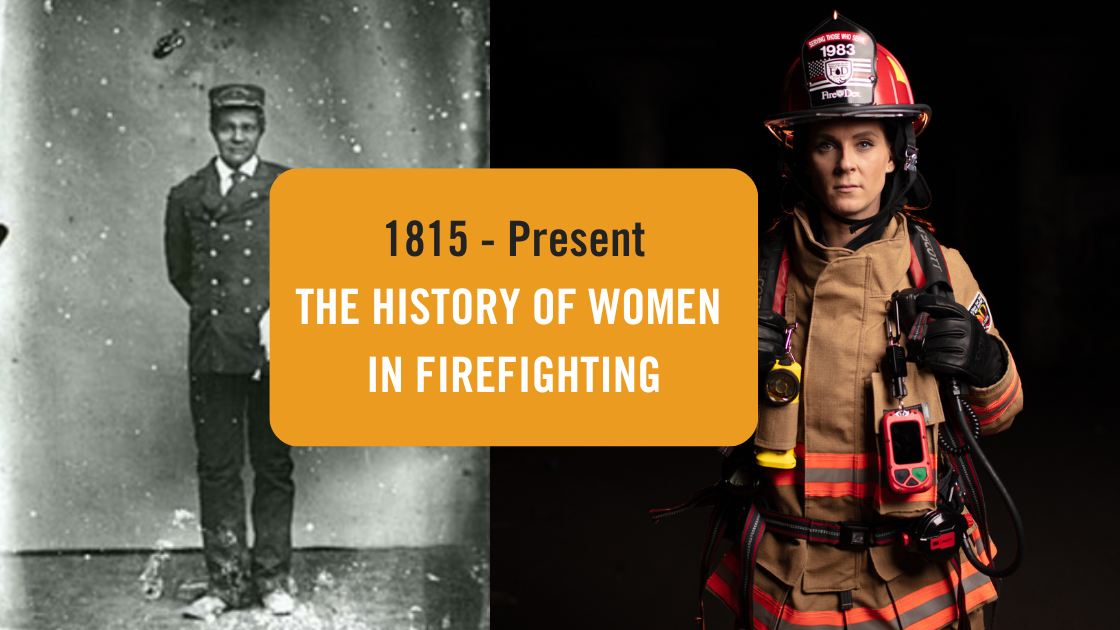Today, there are over 90,000 female firefighters in the United States. While that is less than 10% of the overall firefighting force, that number has been rising in recent years.
The history of female firefighters goes back further than you might think. The first recorded female firefighter was Molly Williams back in 1815.
From 1815 to today, here are some of the great pioneers of females in the firefighting industry.
The History of Female Firefighting
Molly Williams
Molly Williams was the first reported female firefighter. She became a member of Oceanus Engine Company #11 in 1815 after being freed from slavery in Manhattan. She continued working as a servant and would accompany her employer to his job as a volunteer firefighter. He took her to the station to cook and clean. When the men would get sick, she would care for the crew.
During the blizzard of 1818, a cholera outbreak decimated the number of available firefighters. As Williams knew how to work the equipment, she took over and helped put out fires.
Molly pulled her weight, and was said to be “as good a fire laddie as many of the boys” by some of the other firefighters. She worked up until close to her death at the age of 74.
While Molly Williams was the first female firefighter, she certainly wasn’t the last.
Chief Nancy Allen
Chief Allen entered the fire business in 1931 in Cedar Hill, Rhode Island. She drove a heavy fore engine that she purchased second-hand and fixed up. She gathered friends and neighbors to form a volunteer corps, providing her own equipment to help combat fires—more than a thousand feet of fire hose and two motor-driven pumps.
With her volunteer squad and firefighting equipment, she set to work fighting forest and house fires. She was credited with saving dozens of lives. She later become the first female fire chief in the world at Cedar Hill Volunteer Fire Department.
Judith Livers
Livers was the first woman to become a career firefighter. She was hired in Arlington County, Virginia in 1974. While there were many volunteer female firefighters at the time, Livers was the first hired as a full-time firefighter.
Livers was originally a volunteer firefighter with the Fairfax County, Virginia department before applying for a full-time position with the Arlington County department. As part of that hiring process, Livers was asked to perform a physical fitness test (no such test had existed prior to this) in gear that was much too large (still a common complaint among many female firefighters).
She also faced protests both inside the firehouse and outside. Livers had to deal with problems such as a lack of facilities (she could not use a shower at the station for years) and her crew intentionally sabotaging her equipment so she would fail inspections.
Through all that, Livers rose up the ranks, eventually becoming the nation’s first female battalion chief after 17 years on the job.
Brenda Berkman
Before 1977, FDNY did not allow female firefighters. Brenda Berkman changed that. She won her lawsuit against the FDNY for discriminatory hiring practices and later joined the FDNY after quitting her job as a lawyer.
Like other women in the fire industry, Berkman faced intense discrimination. But her love of firefighting kept her on the job.
She went on to become a major advocate for women in firefighting. Looking back on her career, Berkman commented, “I don’t think of myself as just opening the door for girls and women. I opened doors for everyone. I think of myself as expanding the idea of how wrong gender stereotypes are for boys and girls.”
The Future of Female Firefighting
While female firefighters have come a long way, there’s still a long way to go.
There are multiple groups out there working to further the cause of female firefighters. Fire-Dex is proud to work with a number of female firefighter groups, like Women in Fire and Female Firefighters of Ohio.
Women are making themselves heard across the entire firefighting industry, especially with regard to how their gear fits. For instance, Fire-Dex is working to ensure that gear fits every body type. We’ve heard over and over how traditional gear doesn’t fit women correctly. So we decided to change that. Our gear is designed to fit every body type because every firefighter deserves to be protected.
There’s no doubt that more and more women will join the fire service in coming years. From Molly Williams to present, the future for female firefighters is bright!






Leave a Reply